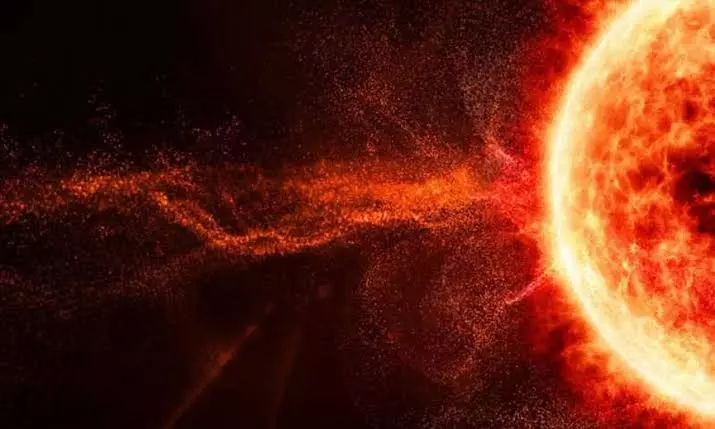
Explosions on alien sun could provide clues to history of our solar system say scientists
text_fieldsScientists studying the EK Draconis star witnessed a staggering eruption of solar matter, with the young star flinging out jets of superheated gas and plasma in an event known as a "coronal mass ejection", that could provide clues to how our own sun shaped the solar system said scientists at the University of Colorado.
The findings have been published in a study headed by astrophysicist Yuta Notsu who headed research at the Laboratory for Atmospheric and Space Physics. Using telescopes, the research team studied the violent solar storm on EK Draconis, which they said was 10 times bigger than the most powerful coronal mass ejection ever recorded from a sun-like star.
"This kind of big mass ejection could, theoretically, also occur on our sun. This observation may help us to better understand how similar events may have affected Earth and even Mars over billions of years," Notsu said in a statement released by the University.
Mars has a thin atmosphere presently but there is evidence that the planet was blanketed in a much thicker atmosphere millions of years ago, said Notsu. A severe coronal mass ejection event from our own sun could have stripped the planet of its atmosphere and shaped the solar system as we know it today, he hinted.
Mass ejection events can fling out quadrillions of kilograms of material from the star at a speed of a million miles per hour and are typically triggered after a "superflare" or a sudden, high burst of radiation. In 2019, Notsu and his colleagues published a study that showed that young sun-like stars around the galaxy seem to experience frequent superflares.
The researchers observed the star for 32 nights using Nasa's Transiting Exoplanet Survey Satellite (TESS) and Kyoto University's SEIMEI Telescope. EK Draconis is a young star at only 100 million years old and is the same size as our own Sun, but it's youth and activity may provide crucial clues to the history and current activity of our own sun, which is much more sedate.























